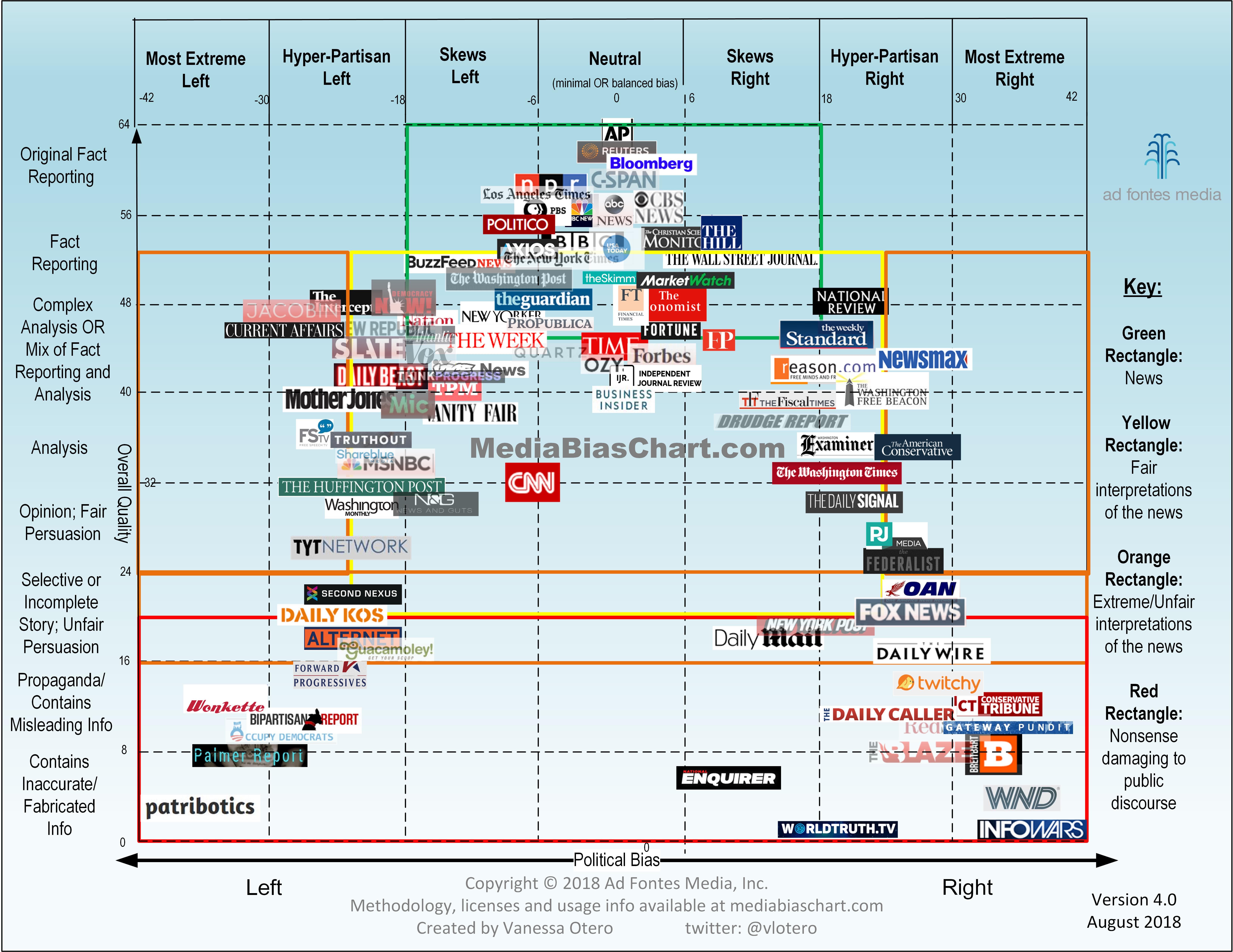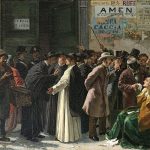Media Bias and what you can do about it
A Media Bias Chart:
An article published by NPR (9/6/2018) described how the president of the USA has intensified his attack against the “fake news” media. This is another sign of an unpopular president turning against the beast that begat him in the first place. But is also an indication of the intensifying media bias, in the US and globally.
A traditional mass media starved for paying customers and advertising dollars, have resorted to stronger bias and sensationalism to keep their ratings. A development that I pointed to in my recent book La Mano Emergente. But how do we know where we stand in this new and shifting world of media? Here is a chart developed by ad fontes media (Vanessa Otero) in its 4.0 version of August 2018. They describe it as intended to make “news consumers smarter”. Here it is:

Media Bias Chart 4.0
First off, the author of the above graph describes her own political bias as “moderately liberal, but with a good understanding and appreciation of conservative positions”. With that said, let´s analyze the chart. It classifies media outlets in two scales. Political media bias, which goes from “Most extreme left” or liberal, to “Most extreme right” or conservative. Then in a scale of Overall Quality, from “Inaccurate or Fabricated Info”, i.e. fake news, up to “Original Fact Reporting”.
Clusters and Outliers
We can see how some outlets tend to cluster around certain areas. For example, the lower right area within the “red rectangle” of right wing media, where we find companies like Infowars and Breitbart. A similar red cluster for the extreme left contains websites like patribotics and Occupy Democrats. As we walk up the scale of Quality, the media outlets tend to move to the center of political bias (i.e. neutrality). The result is a pyramid, at the top of which are the outlets that have fact based reporting and no political bias. Those are the “bluechips” like Reuters, Bloomberg, NPR, PBS and the New York Times.
The outlier of original, fact based and unbiased news reporting, at the pinnacle of the pyramid, is Associated Press (AP). Another well known organization like CNN is also an outlier, but in the middle region. CNN ranked just below fact based reporting. It is an opinion and analysis network with slight liberal bias. CNN ranked as left-skewed interpretation of the news, without falling into the red rectangle of misleading information. It is an outlier because it has the reporting characteristics of its more biased peers. Now, within the companies that push a “damaging public discourse” and false information is Infowars in the bottom right “pool” of extreme media bias. Joined there by outliers Worldtruth and the National Enquirer.
How to use this media bias chart?
The chart is a good pocket or smartphone guide to explore the media we are consuming, and even mistaking for fact based information. But I find that its most important quality is as a way of identifying our information bubbles, and how to break free of them. Lets say, for example, a reader of Breitbart will (following the model of the Daily Me) normally reads within the bubble delimited upward by Fox News and down by Infowars.
If a person would like to become better informed, he or she might want to explore news outlets further up the pyramid, while remaining within the same political bias spectrum. Say, that person could start reading (or watching) the Federalist, or the Drudge Report, or further up the National Review or Time. While climbing up the pyramid that person might also discover that it makes sense to explore the other side. At the same level of quality one can read the Huffington Post or MSNBC. The goal is to climb up and obtain your news from outlets like CBS News or the Wall Street Journal. You can maintain your moderate bias and read fact-based reporting. This is not an easy process, but worth undertaking.
What can you do?
The changes in mass media and the pervasiveness of online information “bubbles” feed much of the biased and low-quality reporting. This applies for the base of the pyramid on either side of the political spectrum. But the “good news” is you can revert this situation.
Here is what you can do:
- Support a newspaper of your choice: pay the subscription, participate and leave comments.
- Embrace serendipity: buy a printed newspaper from time to time. It’s worth it.
- Help to translate and curate news to reach a wider audience.
- Leave your bias bubble (we all have one) and start exploring new media, new voices, new ideas.
- Always check the factual base of any reporting: never share it unless you are sure of its veracity.
- Be a digital activist: oppose media bias, read, share and spread fact based reporting.
- Support local journalism: don’t let small newspapers die off. Use their classifieds.
- Being a reader means being an engaged citizen: don’t just consume news, participate.
What do you think about media bias?
Please leave you comments below, send me an email or subscribe to my mailing list.
Recommended further reading:
Skewed: A Critical Thinker´s Guide, by Larry Atkins, Prometheus Books, 2016. (280 pages, ISBN: 978-1633881655).
Last Book(s) Published:
![]()





